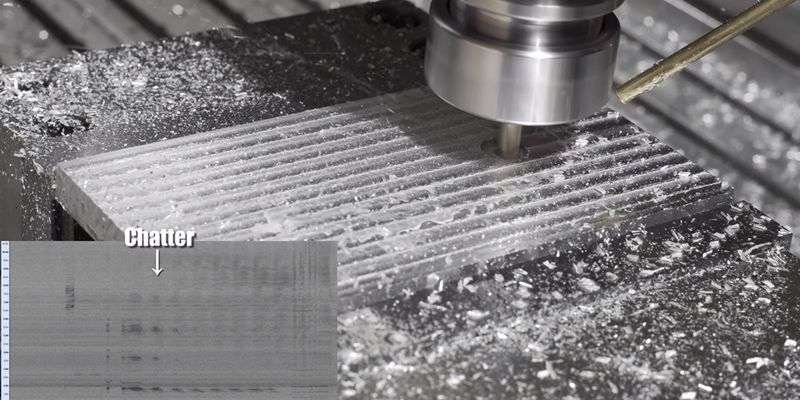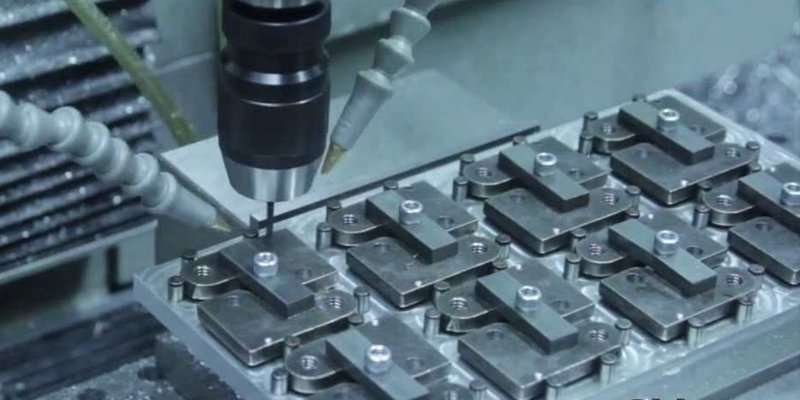CNC lathe cutting tools are machine tools attached to lathe machines to achieve different machining operations, particularly turning. These tools and the device itself are a mainstay in the manufacturing industry because of the vast applications they offer machinists.
Like all CNC machining tools, even though these cutters exist in different variations, they guarantee turning machining regardless of the material type, operations they offer, shape, and feed direction. This article discusses the classifications of lathe cutting tools, the kind of operations they offer machinists, and how to select the right tool for your projects.
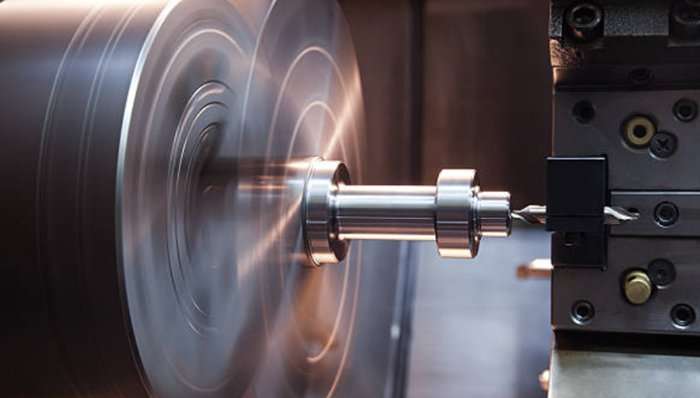
Table of Contents
ToggleWhen and Where Used a Lathe Cutting Tool?
Lathe turning tools are integral for various machining processes, offering versatility, precision, and dimensional accuracy. This device is the go-to machining tool for metal turning operations – a fundamental CNC machining process. However, it suits many other cutting and machining operations.
Therefore, understanding when and where to use these tools aids in optimizing their performance in different applications. Besides turning, below are other machining operations that suit the lathe cutting tools.
- Thread Cutting
- Chamfering
- Grooving
- Facing
- Knurling
- Boring
- Taper turning
- Forming
Parts and Features of a Standard CNC Lathe Cutting Tool
Like any machine, CNC lathe cutting tools consist of different parts, the moving, and the immovable ones.
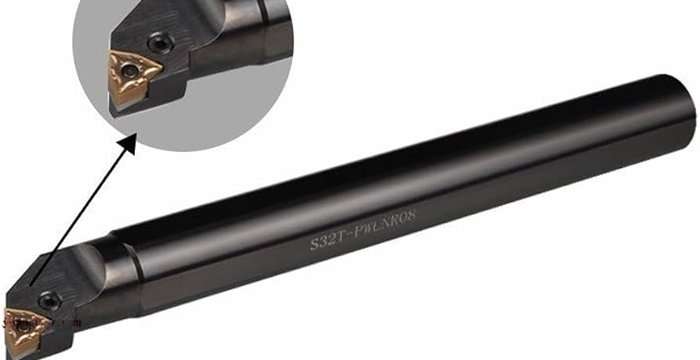
- Dry: The part that does not interact with cutting fluid or coolant.
- Shank: It is the thickest part of the tool, often rectangular and directly connected to lathe machine tools.
- Face: This CNC lathe part interacts with the workpiece during machining, including the cutting edge and where the chip flows during machining.
- Cutting Edge: It is also called the cutting teeth or surface. It is responsible for the cutting and machining action. It is sharp, and the intersection between the face and flank influences cutting.
- Flank: The part opposite and parallel to the workpiece, including the minor and major flank.
- Tool Nose: This is the top or end of the cutting tool, having a curvature that increases its strength, durability, and suitability for vast cutting applications.
- Shank: the non-cutting component of the lathe cutting tool clamped into the tool holder, providing support to the cutting tools during machining.
- Spindle: The rotating lady of the machine that holds the lathe cutting tool, creating the rotary movement during machining.
Classification of CNC Lathe Cutting Tools
Lathe machines come in different variations, accommodating various cutting tools. However, CNC lathe cutting tools can be classified into four broad categories.
- Based on the material type
- Based on specific cutting and machining operations
- Based on the feed direction
- Based on the shape and structure of the cutters.
Below, we will take a more detailed approach to the different classifications of lathe cutting tools.
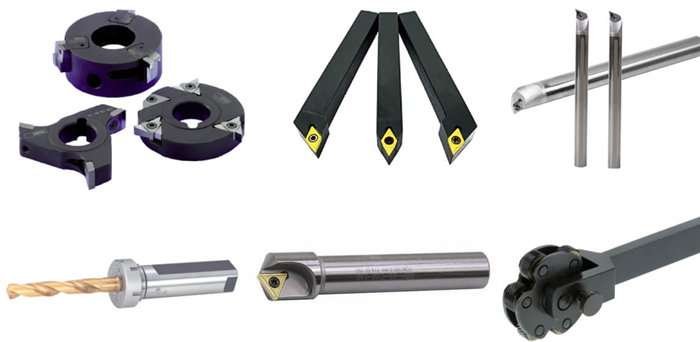
Lathe Cutters Classification Based on Materials
There are different material options for manufacturing parts, each having unique mechanical and chemical characteristics. Therefore, there is a need for different variations of cutters, depending on material type. For example, a cutting tool specific for cutting aluminum will find cutting harder alloys like titanium challenging.
Below is an overview of the standard tools for lathes based on the material type.
High-Speed Steel (HSS)
Besides iron as the base metal, high-speed steel lathe cutting tools include other alloying materials such as carbon, chromium, vanadium, and tungsten. This composition increases its mechanical properties, making this cutting tool extremely hard, strong, and resistant to wearing conditions and high temperatures of up to 588°C.
However, unlike their name suggests, they may not suit high-speed machining applications. They are best suited for moderate to slow-speed lathing operations, making them a good fit for rough and semi-finish machining.
Diamond Blade
Diamond is the hardest material, making lathe cutting tools from this material wear-resistant, extremely hard, and offering impeccable dimensional accuracy. Therefore, these tools are ideal for machining abrasive materials, as the blades won’t wear out, maintaining their sharpness and high precision machining, even at high speeds. However, it is expensive to acquire.
Carbide
Like diamond lathe cutters, the carbide ones are tough. OEMs enhance their mechanical properties by adding other materials like chromium, carbon, vanadium, and tungsten, like in HSS. Adding aluminum oxide and titanium nitride coatings further improves its characteristics, chemical resistance, and effectiveness. Cutting tools with carbide are generally more expensive but are suitable for cutting tough alloys with high precision.
Cubic Boron Nitride
Cubic boron nitride is another material for lathe cutters known for its extreme hardness and abrasion resistance. Also, it possesses high thermal resistance, making it suitable for high-speed machining with excessive heat build-up. It is best used for intermittent cutting and rough machining of hard materials like cast iron with less attention to precision.
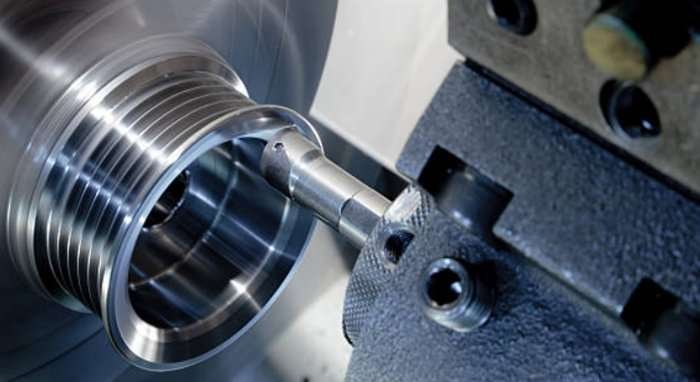
Lathe Cutters Classification Based on Operation-Dependent
CNC lathe cutters are highly versatile, suiting various operations and manufacturing parts for different industries. Below, we examine the standard operations ideal for tools for lathes.
Turning Tools
CNC turning operations are the standard machining process for CNC lathes. The technique involves using these cutters to cut around a fixed workpiece till the desired part or structure is achieved. The tool suits the manufacture of round shapes, often in conical or cylindrical forms. This operation can be further divided into two:
- Rough Turning: These metal turning tools are used to remove large pieces of a workpiece at once, resulting in rougher shapes with inconsistent surface finishing.
- Finish Turning: These tools carefully remove pieces of a workpiece in smaller amounts, ensuring a more consistent, smoother, and accurate finish.
Thread Cutting Tools
As the name suggests, these cutting tools are specified for fabricating threads – spiral features or patterns – into a cylindrical workpiece. These cutters have a nose angle defining the thread angle and a cross-section determining the pitch and depth. Like turning tools, thread-cutting tools can exist in two forms.
- Internal thread-cutting tool, which is often called a tap. It is for cutting internal threads in a pre-drilled hole.
- External thread cutting tool, which suits making surface and superficial threads on a workpiece.
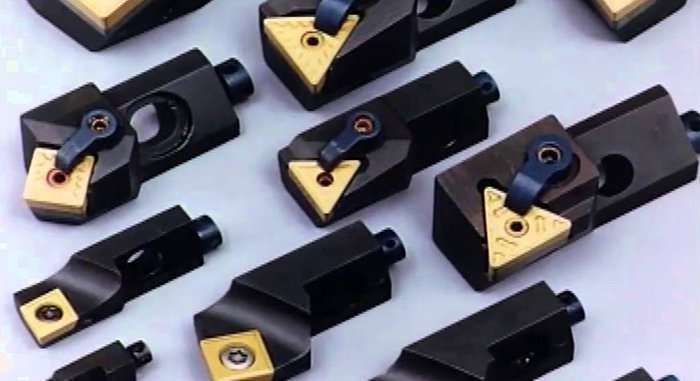
Chamfering Tools
These tools for lathes are specific for creating chamfers – a slanting edge feature in the corner of a workpiece. Ideally, standard metal turning tools can create chamfers in a material. However, the machinist must place the cutters at a right angle to the workpiece to ensure high-quality chamfering.
That said, they exist in three different forms.
- Single angle chamfer cutter – creating a chamfer with a definite angle along the entire feature’s length.
- Variable angle chamfer cutter – allows machinists to create chamfers with varying angles along the length of the cut.
- Indexable chamfer cutter – allows changing the chamfer angle using replaceable inserts, promoting flexibility.
Grooving Tools
Again, the name of this cutting tool indicates its function. Grooving tools are suitable for making grooves of varying shapes in cylindrical components. The shape of the groove depends on the configuration of the cutter. However, the standard ones include the V-shaped and the square-shaped cutters. These cutters tend to have a thin edge that makes them ideal for creating grooves, slots, and parting in a workpiece.
Knurling Tools
Knurling tools are another set of lathe cutters specific for creating indentations and embossed patterns on the surface of a workpiece. The cutters usually have two or more rolling wheels with definite patterns for making the intended features. Examples of knurling cutting tools include:
- Straight knurling cutters for creating straight and linear patterns.
- Diagonal knurling cutters for creating diagonal and diamond-like patterns.
Knurling patterns in a workpiece are specific for making distinct rough surfaces for better grip and workpieces, such as at the handle of a power tool.
Boring Tools
Boring tools are used to increase the diameter of a pre-drilled hole. We emphasize that these lathe cutters cannot create holes themselves; they just widen and enlarge holes or modify them into other internal shapes in a workpiece.
They exist in two primary forms.
- Single point boring bars – these tools have a single cutting edge
- Multi-point boring bars – have several cutting edges.
Boring tools feature a boring bar with a cutting teeth at its end. Therefore, they are suitable for machining and increasing the diameter of a hole.
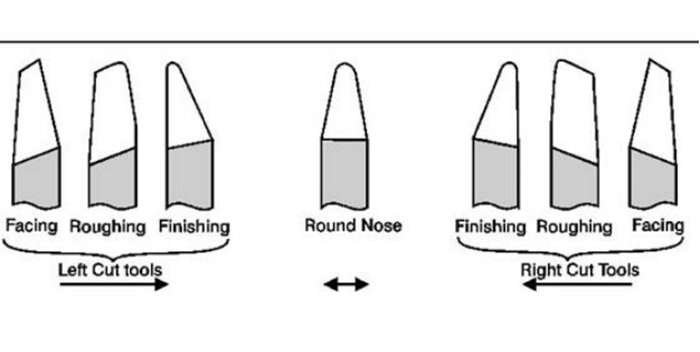
Lathe Cutters Classification Based on Feed Direction
This section classifies lathe cutters into three distinct groups based on their direction.
Left-Handed Lathe Cutting Tool
As the name suggests, a left-hand lathe cutter removes components of a workpiece by transporting them from left to right. These cutting tools are more expensive; consequently, they are not common. However, they are best suited for machining workpieces that are challenging to hold in place. Also, they are suitable for back turning, creating sharp shoulders on the workpieces.
Right-Handed Lathe Cutting Tool
Unlike left-hand, these tools for lathes cut materials in the right-to-left configuration. This feed direction is the common one in most lathe cutters. You can picture this cutting tool as your hand, with the thumb representing the feed direction and the main cutting edge being the left side of the tool.
Since they are the more common lathe cutters, they suit various applications, including turning, facing, threading, and machining flat surfaces.
Round Nose Lathe Cutting Tool
Unlike the previous two tools for lathes, those with the round nose configuration can cut in either direction – from right to left and left to right. The cutters have narrow tips with no side or back rake angle. They suit applications that require smooth surface finishing, contouring round corners and curved features, and complex profiling.
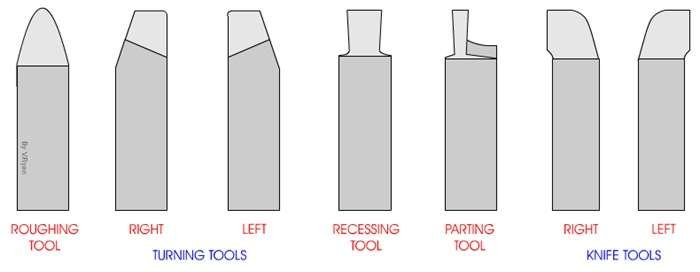
Lathe Cutters Classification Based on Shape and Structural
Depending on the shape and the structure of the lathe cutters, there are three classifications.
Single-Bodied Tools
As the name suggests, this tool consists of a single body structure containing the cutter, which may be the high-speed steel, diamond blade, or carbide. They are usually very strong, having a definite shape and geometry, making them suitable for high-speed and strength machining operations.
Welding Lathe Cutting Tool
These CNC lathes can incorporate welding capabilities into their functionalities; they can join different materials together. It allows the creation of custom geometries and the modification of existing tools for newer applications. This improves the versatility of this tool, making it a cost-effective solution for fabricating complex structures.
Clamp Lathe Cutting Tool
Calm lathe cutters are similar to welding tools using temporary joining methods. These tools encourage easier insert replacement and inserts with multiple cutting edges. Therefore, they suit various operations, particularly those requiring constant tool switching during parts’ machining.
Benefits and Limitations of Lathe Cutting Tools
We have already established that lathe-cutting tools have vast capabilities suitable for various manufacturing applications. Below, we explore some of the benefits and limitations of tools for lathes machines.
Benefits
- Versatility: Lathe cutting tools suit various machining operations, including turning, threading, chamfering, and grooving.
- High Precision: These tools offer high-precision machining, allowing for fabricating intricate and detailed parts with consistent quality.
- Vast Material Compatibility: Lathe cutters are suitable for the machining of various materials, including metals, alloys, plastics, composites, wood, etc.
- Durability: Depending on the material, lathe-cutting tools are generally durable, providing long tool life even in challenging machining conditions.
- Custom Part Fabrication: Some lathe-cutting tools, such as welding and clamp tools, allow for customization, enabling the fabrication of complex structures.
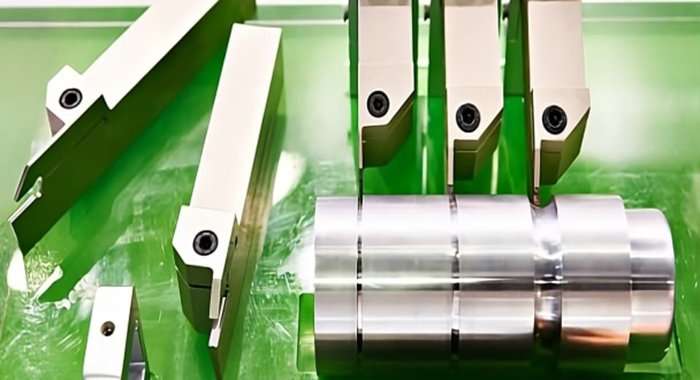
Limitations
- Tool Wear: Tools for lathes may experience tool wear after extended use, mainly due to the consistent machining of hard materials, which reduces cutting performance and tool life.
- Capital Investment: Lathe cutters, particularly those from advanced materials like diamond or cubic boron nitride, are generally expensive, impacting the overall cost of machining setups.
- Complexity in Tool Selection: The extensive range of tools for lathes may make tool selection more challenging, especially for inexperienced machinists.
How to Choose the Right Lathe Cutting Tool for Precision Machining?
We already established that there are different extensive cutting tools. Therefore, understanding your project’s requirements is important to making the right choice that suits it. Below, we discuss factors to consider when selecting the suitable lathe cutter for your application.
Desired CNC Operation
The first factor to consider in CNC turning and milling operations is whether the selected tool suits the intended function. Every lathe cutter has a particular application it best suits. For example, there are lathe tools specific for turning, chamfering facing, and other specifications. While some shit multiple operations, others do not. Therefore, select one that suits your desired CNC operation before choosing it.

Material Choice
The mechanical properties and composition of the workpiece play significant roles in the choice of any machining tool you select. The standard features to consider are the material strength and hardness. Ignoring the material’s property may result in inefficient machining and tool wearing or even cause you to spend more than required.
For example, when machining hardened alloys, it’s best to stick with carbide or diamond blade tools for lathes because they are more efficient and wear-resistant for such materials.
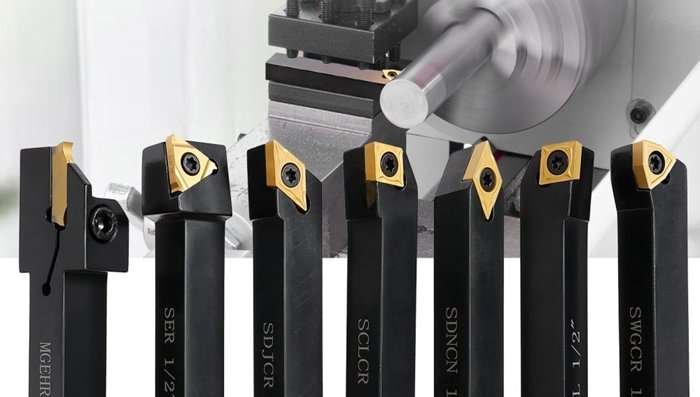
Shape of Intended Part
Generally, turning services are for creating round parts – usually in the form of cylinders and cones. However, lathe cutters can adopt various tools, allowing the fabrication of more sophisticated shape configurations. Whether your fabrication calls for contours, square or diamond-shaped inserts, ensure to select a cutter that can create the intended shape and structures of your part.
Coating of the Lathe Cutting Tool
Coatings generally improve lathe cutting tools’ durability, mechanical features, and visual appeal. They also play a crucial role in the suitability of a cutting tool for a particular application.
For example, when machining materials made of titanium, it’s best to use a tool coated with titanium. Coatings like TiN (Titanium Nitride) and TiAlN (Aluminum Titanium Nitride) reduce friction and heat generation during machining.
Desired Surface Finishing
The desired surface finishing of a machined part plays a role in selecting the lathe cutters. Choose a tool for lathe with an appropriate nose radius based on your desired surface finish. For example, there are two types of turning tools: one for rough finishing and the other for smooth, consistent finish.
Ensure you use the suitable surface finishing a part requires to ensure your fabrication meets all the design specifications. In fact, the surface finishing of a part may influence its tolerance. For example, parts with tight tolerance requirements tend to require a smoother and more consistent finish. However, this may be different; consequently, ensure a proper understanding of the parts’ specifications and adhere to them.
Feed Rate, Cutting Speed, and Depth
You should also consider the feed rates, cutting speed, and depth specifications before selecting tools for lathes. These parameters require optimization before machining unless your fabrication may not attain the intended specifications. Also, you want a machine that suits your intended parameters before proceeding.
For example, single-body lathe cutters with diamond or carbide blades suit high feed rates and cutting speeds because of their high wear resistance, durability, and strength. Likewise, a tool for deep cutting must possess good chip evacuation to prevent accumulation and high-quality machining.
Get High-quality Lathe Tools and CNC Turning Services at XinCheng
Besides having a detailed understanding of the different kinds of lathe cutting tools, including their applications, you need the machine for your manufacturing projects. However, this device is expensive, requiring high initial costs; therefore, partnering with a third-party service provider is smart.
XinCheng is an expert in offering high-quality CNC turning services. From prototyping to production, our expert machinists and engineers can meet your specific requirements for your machining projects.
Conclusion
Lathe cutting tools offer diverse applications, making them a mainstay in CNC machining services. Manufacturers just attach one of the lathe tools to the CNC lathe machine to machine their parts, depending on their fabrication needs. However, engineers and machinists must familiarize themselves with the different lathe cutting tools for more accessible and seamless use of these cutting tools.
FAQs
Can the Same Lathe Cutting Tool Machine Different Materials?
Yes, the same lathe cutters can machine different materials. Lathe cutting tools are generally versatile and compatible with various manufacturing materials.
What Machining Operation Does Lathe Cutting Tools Suit?
Lathe cutting tools are the go-to machining equipment for turning operations. However, these tools may exist in different variations, offering other applications, including chamfering, boring, grooving, taper turning, etc.
Which Lathe Cutting Tool is of the Best Quality?
Generally, machinists don’t prefer to describe a particular lathe cutter as having the best quality. The diamond lathe cutters offer the most diverse applications, cutting from flexible to more rigid material options. Therefore, we can say they have the best quality; however, they are expensive and often restricted to specific industrial applications.

